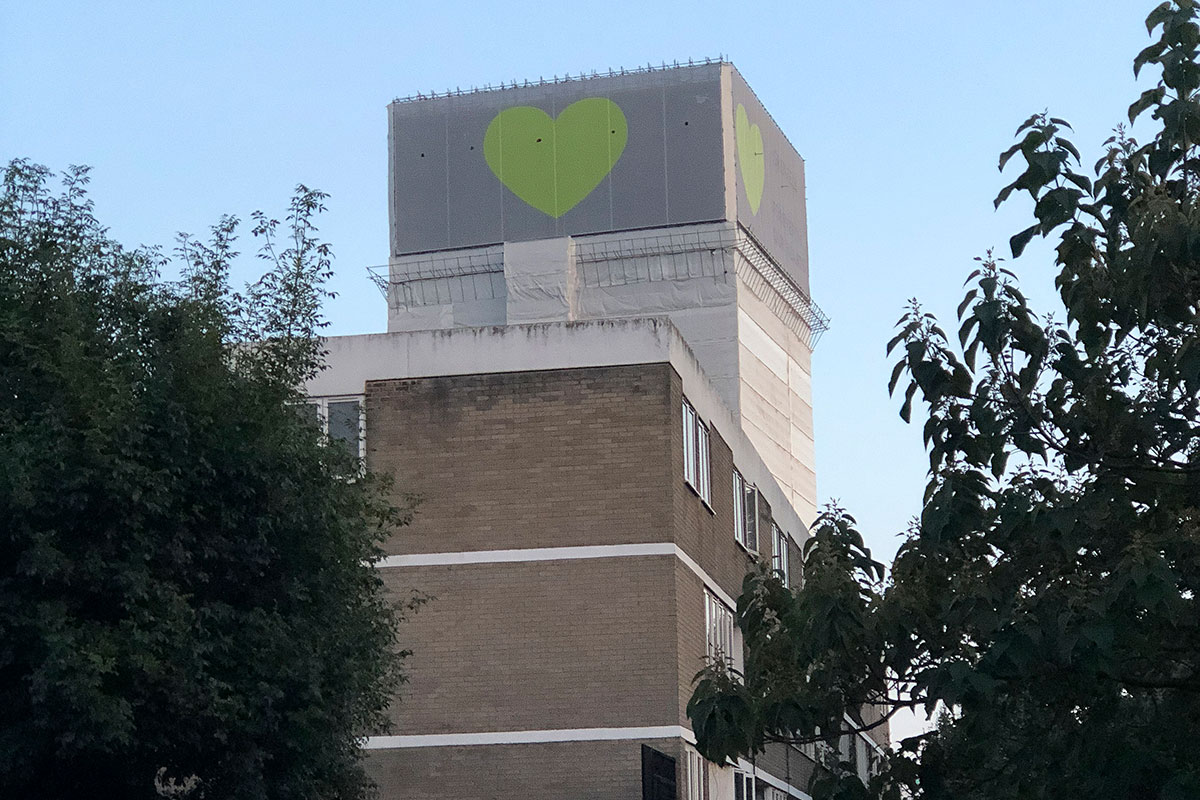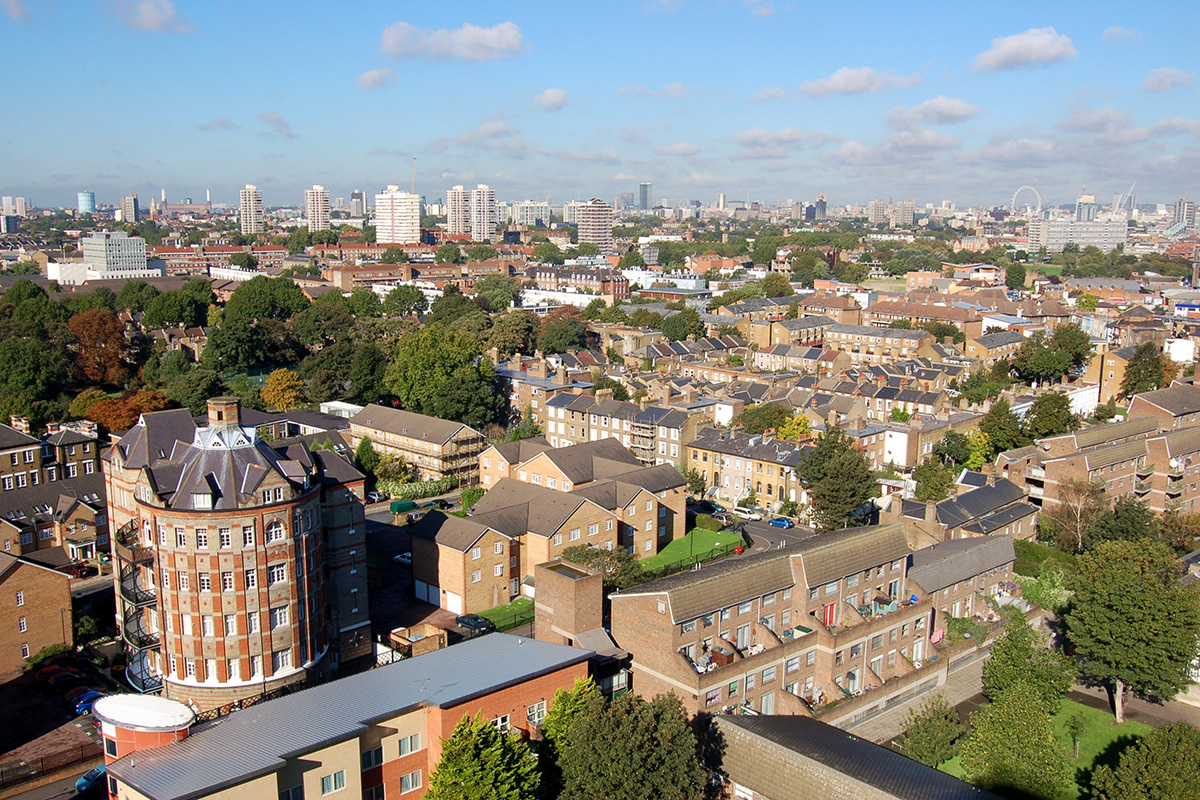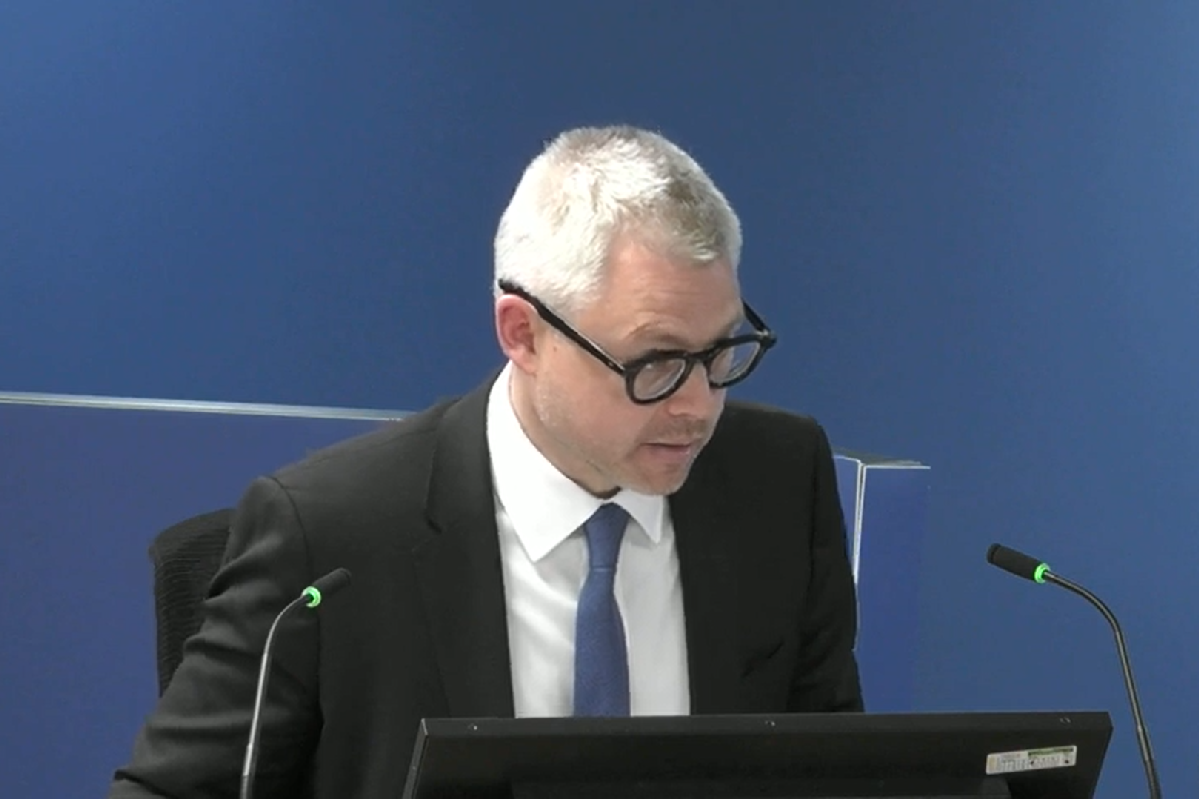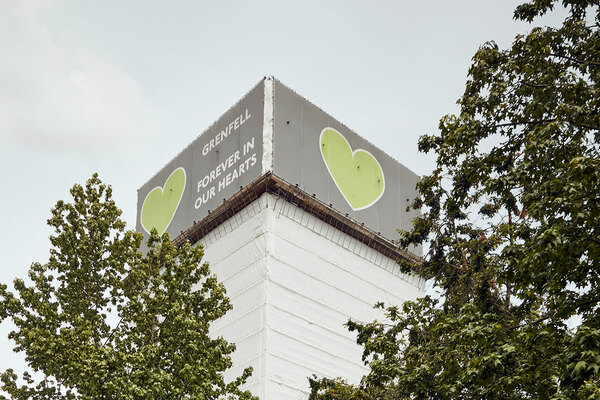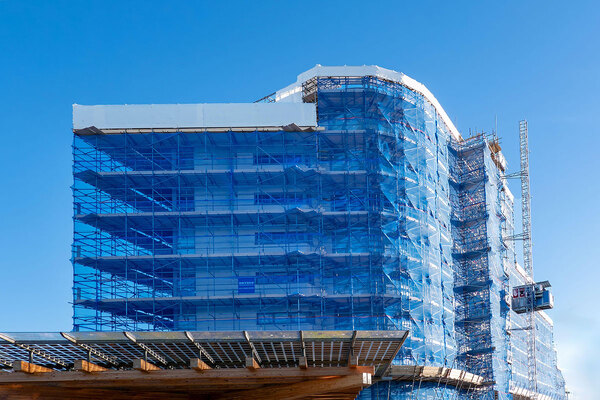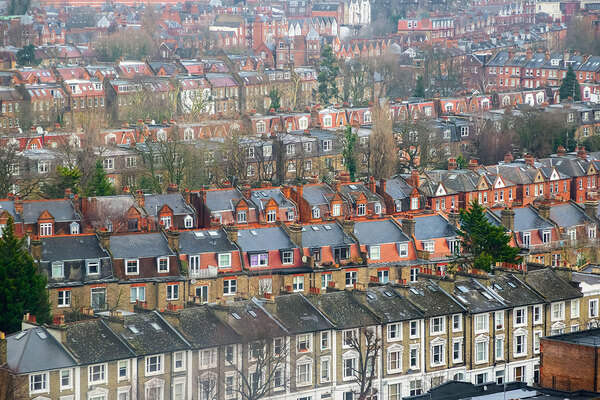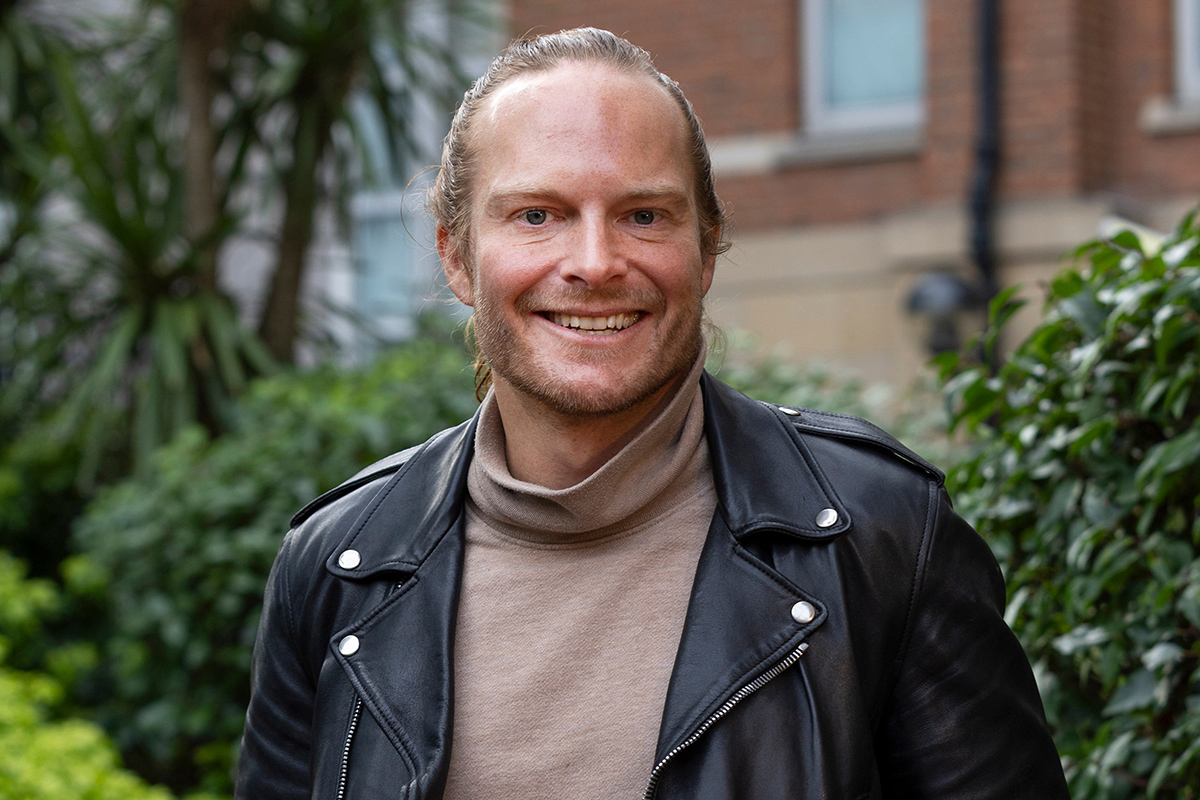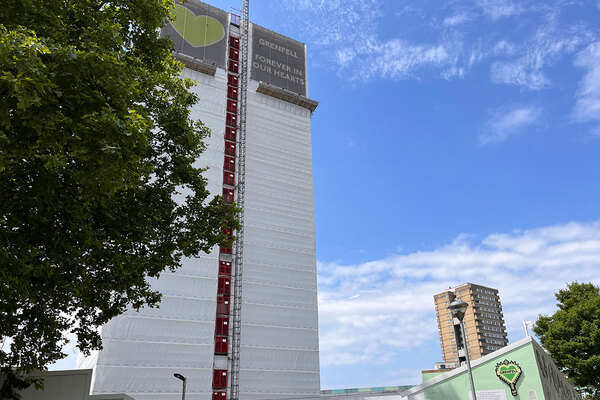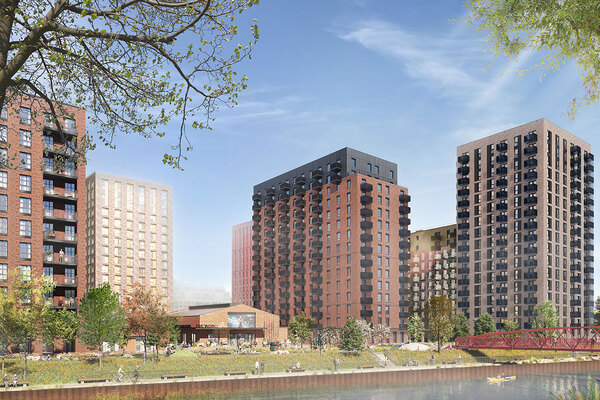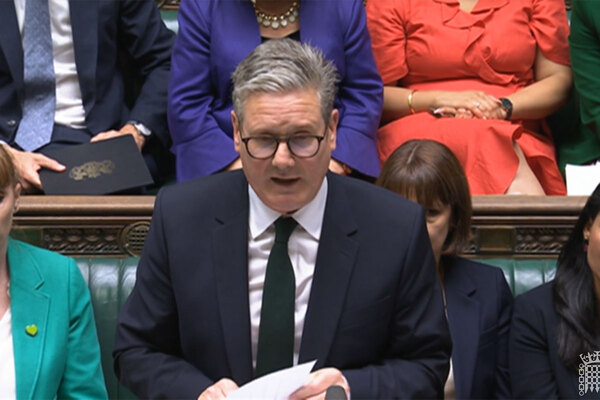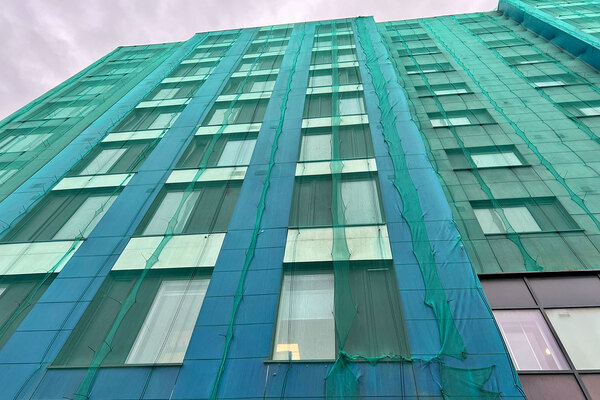‘Essential’ that ‘stay put’ policy for high rises is abandoned, expert tells Grenfell Inquiry
It is “essential” that the ‘stay put’ policy for high-rise buildings is “abandoned” because the risk of fires spreading externally cannot be properly assessed under current methods, an expert witness to the Grenfell Tower Inquiry has said.
Content warning: this article features an image of the cladding material used on Grenfell Tower burning during a fire test
Professor Jose Torero today gave evidence that also criticised the primary test method for facades in the UK regulatory system, saying it does not provide “any meaningful measure” for real-world fire performance.
He was followed by Professor Luke Bisby, who presented the results of new testing on the cladding products used on Grenfell Tower, describing the results as “the most shocking experiments I have ever witnessed after about 15 years of working in these labs”.
Professor Torero, a professor of civil engineering at University College London and a globally recognised fire expert, was asked to give his expert opinion on the adequacy of the testing regime for materials used in building facades.
In his report, which he presented this morning, he said that “any building envelope that allows for any form of fire spread will not be consistent with a ‘stay-put’ strategy”.
“If the complexity of the building envelope cannot be resolved into a characterizable performance, it is necessary to give serious consideration to avoiding a ‘stay-put’ strategy,” he wrote, adding that it requires “no tolerable errors and uncertainties”.
He added: “The nature of current tests, current testing practices and the information they can deliver is so limited that proper assessment of performance for systems of the complexity of those currently implemented in buildings is not possible by these means.”
He said that even if a non-combustible cladding system was used at the tower, “a fire could have induced other forms of failure such as deformations, detachment of components, etc that could have enabled the propagation of a fire into adjacent units”.
He concluded: “Current testing practices and the prevailing professional competency do not enable us to make this characterization [no external fire spread] with confidence. Thus, the abandonment of the ‘stay-put’ strategy for [high-rise residential buildings] is essential.”
The conclusion comes weeks after the government proposed abandoning the inquiry’s first phase recommendation that all building owners be legally required to develop evacuation plans for their blocks.
In its consultation response, it said: “High-rise domestic buildings are generally built to have a ‘stay put’ strategy, where it is considered generally safer for residents to stay in their flats if the heat or smoke from the fire is not affecting them.”
It added: “The fire and rescue service advise that ‘stay put’ remains the appropriate strategy in the vast majority of such buildings.”
This position contrasts completely with the conclusions of Professor Torero’s report today, as well as the findings of the first phase.
Professor Torero has held a variety of academic positions, including as a chaired professor within the Department of Fire Protection Engineering at the University of Maryland, and has won awards in the US and the UK for his contribution to fire science.
He was also editor-in-chief of the Fire Safety Journal, the most respected scientific publication in the field, for six years and has worked on many high-profile fire investigations, including a nine-year study into the 2001 World Trade Centre collapses.
He also raised substantial concerns about the use of large-scale ‘BS 8414’ tests as a means of assessing the safety of building facades.
The test, first developed by the Building Research Establishment (BRE) in the early 2000s, has been an important feature of building regulations guidance ever since.
But Professor Torero warned that a cladding system could “meet the [pass] criteria and yet still be entirely incompatible with the fire safety strategy of a high-rise residential building with a stay-put policy”.
He added that it is “a very simple exercise to find weakness and flaws in the manner in which BS 8414 was designed and is used”.
He also raised concern about a new British Standard, published with the approval of government, since the Grenfell Tower fire, dubbed BS 9414 and designed to allow results from tests to be extrapolated to other, similar systems.
“The principles behind BS 9414 are fundamentally flawed and this document will continue to encourage an inappropriate process of fire performance assessment. Thus, it is my strong belief that this standard should not be used,” he wrote.
Again, this is an embarrassing conclusion for the government, which last week announced plans to continue allowing the use of combustible materials on medium-rise buildings, providing it is justified with data from a BS 8414 test.
In his oral evidence, Professor Torero also questioned the new ‘PAS 9980’ methodology that will be used to make assessments of combustible materials present on existing buildings, saying that it leaves “enormous space for interpretation”.
“Knowledge and support to fire-safe buildings is currently available. And the traditional practice of regulating before understanding is no longer necessary,” he said. “Documents like PAS 9980, unfortunately, still follow that approach. And I think we need to be very, very careful in the way in which we use them.”
Professor Torero was followed in the afternoon session by Professor Luke Bisby, chair of Fire and Structures and Head of Research Institute at the University of Edinburgh, who presented findings from a series of bespoke tests carried out on the materials used on Grenfell Tower.
He played a video that showed the “violent” fire spread that occurred in a mock cladding system featuring the aluminium composite material (ACM) panels used on the tower, combined with K15 insulation made by Kingspan.
The test involved introducing a row of flames to the base of the gap between the insulation and cladding panels for four minutes, before removing it and observing the results.
The test showed flames growing steadily in the cavity between the cladding and insulation for around 10 minutes, before bursting suddenly into flame as the polyethylene inside the ACM ignited.
“Even having witnessed this escalation in person, now dozens of times, I still find it pretty shocking. Indeed, the comparatively small size of our experiments in general terms was dictated by the fact that these were the largest experiments that we felt we could safely perform within our purpose-built fire labs,” he said.

“These were some of the most shocking experiments I have ever witnessed after about 15 years of working in these labs. And I feel at this point that I should remind you that this is the experimental arrangement burning without any external stimulus.”
He ran similar tests with other forms of insulation – including non-combustible – producing similar results, albeit with the sudden escalation occurring later.
However, when he tested with no cavity, or with one that was not insulated and backed instead by water-cooled steel, the escalation did not occur.
As a result, he concluded that the ACM was the primary cause of the rapid fire spread at Grenfell, with the insulated cavity behind it creating the conditions in which this dramatic escalation could occur.
Professor Bisby also produced smaller-scale tests on the materials, showing the shocking fire performance of a 10cm by 10cm piece of ACM – which burned for four minutes, with large quantities of dripping, burning plastic produced.
Professor Bisby said that the sample was merely the size of a beer mat, and that 270 such squares could fit within one single panel used on the columns of Grenfell Tower.
Similar small-scale tests on the insulation showed the plastic igniting rapidly and burning fiercely.
The product made by Celotex continued to reignite and burn intermittently even after the formation of a layer of ‘char’, which temporarily extinguished the blaze, while the product made by Kingspan smouldered and lost mass until it was almost completely consumed.
However, neither product ignited when tested with a foil facer.
Professor Bisby stressed that his conclusion about the primary contribution of the ACM as compared to the insulation had “not considered any smoke production issues as part of my investigations at all”.
“Questions around toxicity and smoke production are relevant, but are being addressed by other experts to the inquiry,” he said. Plastic insulation products are known to produce toxic smoke when burned.
“I want to emphasise that just because the physics tells us that a particular material or product may or may not have governed what occurred at Grenfell Tower, this does not in my view mean that the inquiry shouldn't seek to understand as fully and completely as possible how these products came to be installed within Grenfell Tower… or the culture and context within which this occurred,” he said.
The inquiry continues, with both professors due to be questioned on their findings next week.
Update: at 9.45pm on 09.06.2022
An earlier version of this story described Professor Torero as the former chair of the Department of Fire Protection Engineering at the University of Maryland. In fact, he was a chaired professor within that department.
Sign up for our weekly Grenfell Inquiry newsletter
Each week we send out a newsletter rounding up the key news from the Grenfell Inquiry, along with the headlines from the week
Already have an account? Click here to manage your newsletters
